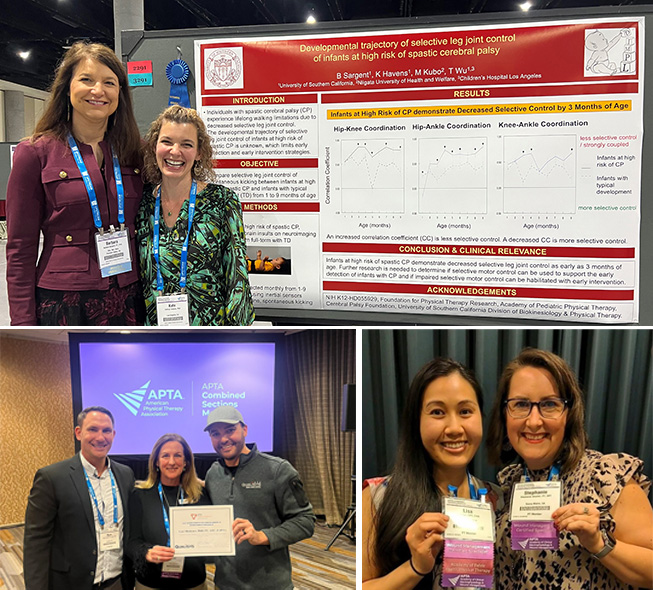03.07.2023
By uscbknpt
CSM 2023 Recap

A look at those recognized at this year’s annual American Physical Therapy Association’s Combined Sections Meeting.
BY JOHN HOBBS MA ’14
IN LATE FEBRUARY, thousands of physical therapists and physical therapy assistants descended on San Diego, Calif., to attend the American Physical Therapy Association’s Combined Sections Meeting.
In addition to a number of faculty and students who made presentations and presented research posters for the annual event and Kari Kretch taking home the Toby Long Award (see related story), here are some highlights worth noting:

Lori Michener
Professor Clinical Scholar-Physical Therapy
Michener was recognized with a Biomechanics Special Interest Group Career Excellence Award in Biomechanics Research. Her research is centered around defining optimal treatment pathways for patients with musculoskeletal shoulder disorders. “I have spent my career aimed at characterizing the contribution of altered biomechanics to the development of shoulder pain in order to optimize diagnosis and management of patients with musculoskeletal shoulder pain,” Michener said. “This award acknowledges those contributes, and I am humbled and honored.”

Stephanie Woelfel
Associate Professor of Clinical Physical Therapy and Surgery
Woelfel was recognized as one of 12 inaugural members of the Board Certified Wound Management Specialists. To become a Board Certified Wound Management Specialist member, one must submit evidence of 2,000 hours of direct patient care as a licensed U.S. physical therapist in the specialty area, a case report demonstrating specialty practice in wound management and a current CPR certification. Additionally, Woelfel had to pass a 200-question exam pertaining to wound management.


Barbara Sargent PhD ’13
Associate Professor of Clinical Physical Therapy
Kathryn Havens MS ’05, PhD ’13
Associate Professor of Clinical Physical Therapy
Sargent and Havens won an Outstanding Research Abstract Award for best pediatric poster. Their poster, titled “Developmental trajectory of selective leg joint control of infants at high risk of spastic cerebral palsy,” shared their discovery that an infant as young as 3 months old at high risk for spastic cerebral palsy had difficulty isolating the movements of individual joints in their legs. Further research is needed to determine if this difficulty isolating leg movements can be used as a biomarker to diagnose children with cerebral palsy in early infancy and if early intervention focusing on activities to isolate leg movements might lead to improved walking outcomes for children with cerebral palsy.

